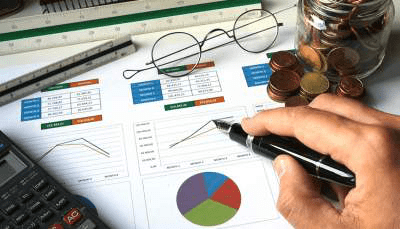Market Volatility and the Value Investor
Aug 01, 2012 | 18:21 PM IST
Aug 01, 2012 | 18:21 PM IST

- Market Volatility
Instead of being a victim of market volatility a value investor should use it to increase their investment returns. Technology has increased the ability to trade assets worldwide and disseminate information and knowledge instantly. Human emotions and investor reactions to the information received is what havent changed. The result is markets react stronger and quicker, creating large price swings, particularly in a secular bear market. This means the value investor needs to think ahead of the crowd to take advantage of the volatility.
The Value Investor and Consensus
Thinking ahead of the crowd often means thinking the opposite or contrary to what the vast majority believe. Following the herd can be destructive to an investment portfolio. If investors reach a consensus and have a particular outlook on an asset, the current price already reflects that outlook. In other words, if 90% of investors believe an asset is going higher they have probably already bought; leaving few buyers to drive the price higher. Conversely, if 90% of investors believe an asset can only go lower they have most likely already sold; leaving few sellers to drive the price lower. In both cases, it takes very little to spark a major change in direction, leaving the majority scrambling to reverse their position.
Taking Advantage of Market Volatility
In order to take advantage of market volatility the value investor should employ these steps:
-
Find Great Companies
-
Determine When to Buy and Sell
-
Maintain a Disciplined Approach
Find Great Companies
I like to maintain a list of companies I want to buy at lower prices. That way Im prepared when volatility provides opportunities. Stock selectionis an important first step. You want to find great companies that will deliver growing earnings overtime. I like to use a stock screenerto get my initial list of companies for further research.
Determining When to Buy and Sell
Once you have a list of great companies, you want to determine the intrinsic value. This value may be more or less than the market price of the stock. In the long run, it is the future cash flows, expected growth, and risk of the security that will determine its fundamental or intrinsic value.
The goal of the value investor is to buy a stock with a margin of safety. In other words, if you can buy a stock for much less than its real worth then you have eliminated some of the risk and have put the odds of a profitable investment heavily in your favor.
The time to sell a stock is when the margin of safety is no longer acceptable. This might be caused by the price of stock rising (hopefully) or a deterioration of the fundamentals of the company. Nevertheless, the time to sell is when an alternative investment provides a better value or when the margin of safety no longer puts the odds heavily in your favor.
Maintain a Disciplined Approach
To implement these strategies you must have courage and be able to stay disciplined. Prices are bargains because others are selling, and when prices are high its because other investors are buying. The value investor must be able to think the opposite or contrary to what others are thinking; particularly when there is a large majority or consensus on an investment. Instead of being a victim to market volatility a value investor should use it to boost portfolio returns.















